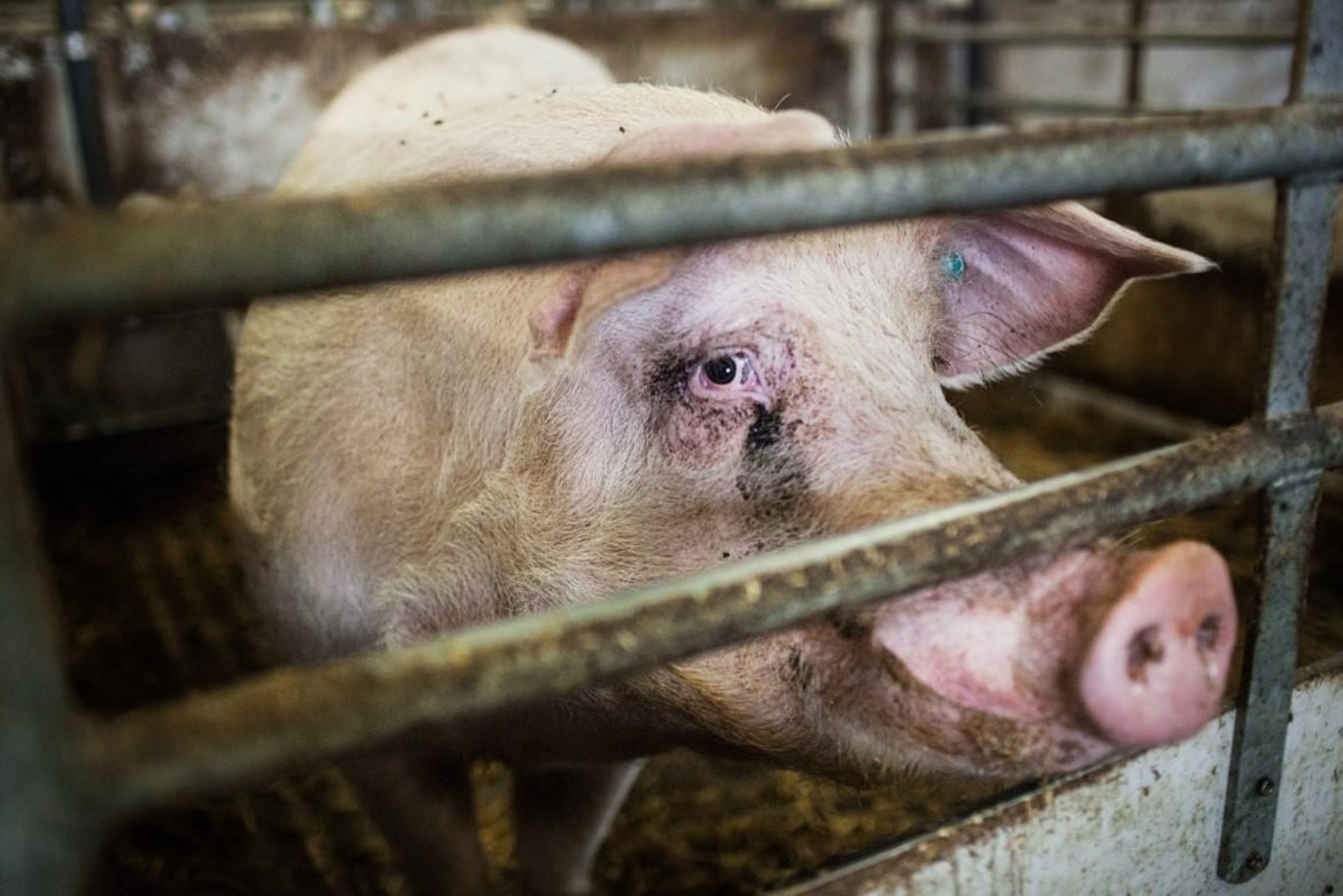Mixing cull sows in pick-up pens may affect their welfare
Being mixed with unfamiliar sows is a common practice for cull sows in the days before transport to slaughter. A new study from Department of Animal Science, Aarhus University, suggest that this practice may have welfare consequences for the sows.

In modern pig production, up to 50% of the sows are slaughtered each year. In the timespan from when the farmer decides to cull a sow and until slaughter, it is common practice to house sows together in temporary pick-up pens. This is done to minimize transport costs per sow. The period in question may vary from a few hours to several weeks, depending on when the sows are picked up and transported to the slaughterhouse. Cull sows are known to be vulnerable compared to younger, market weight pigs, but so far the behaviour and welfare of this particular group of pigs have received very limited scientific attention.
How do we take care of the cull sows in the last days?
“From sows in production, for example in relation to mixing pregnant sows, we know that the aggression arise during mixing. When forming a hierarchy, the risk of injuries to the animals is increased. This risk is a challenge not only to the economy but also to the welfare. We also know that cull sows can be more vulnerable than younger, healthy animals and that problems regarding fitness for transport are relatively common in this group of animals. Therefore, it may seem surprising that no recommendations or rules exist on how to house and take care of the sows during their last days before being transported to the slaughterhouse,” says senior researcher Mette S. Herskin, Department of Animal Science, Aarhus University.
In order to gain more knowledge about this phase of the sows’ life, a team of researchers from Aarhus University has examined the clinical and behavioural consequences of mixing cull sows before they are transported to the slaughterhouse.
Study in a private pig herd
In total, 103 cull sows from a private herd were included in the study. The farmer provided the use of his animals and barns for free. Data were collected weekly during a period of six months. In the current herd, the sows were loose housed during lactation, and the piglets were weaned at 28 days of age. After weaning, cull sows were examined clinically, and moved to pens in groups of 3-4 sows. The sows stayed in the pens for 1–10 days until they were picked up and transported for slaughter.
After 24 hours in the pick-up pens, the sows were re-examined clinically. Surveillance cameras were placed above each pen, recording behaviour of the sows during the initial six hours after mixing.
Results
Before mixing, the clinical examination showed that the cull sows had few superficial skin lesions, few wounds and a gait score close to normal. Twentyfour hours after mixing, the clinical condition of the sows had deteriorated , shown as for example an increased gait score, increased occurrence of superficial skin lesions and a tendency for more wounds per sow.
“I am pleased that we had this opportunity to provide research-based knowledge about this category of pigs. Luckily, we had a very skilled and independent M.Sc. student to help us, and a farmer who was willing to participate free of charge,” says Mette S. Herskin. In conclusion, she adds that future studies focussing on the optimisation of barn and management conditions for this category of pigs are needed if we want to solve these challenges.
Facts about the project
Funding
None. |
Collaboration
No external collaborators. |
More informationRead the full scientific article here: https://www.sciencedirect.com/science/article/pii/S0168159120301167 |
ContactMette S. Herskin, Department of Animal Science, Aarhus University
E-mail: MetteS.Herskin@anis.au.dk |
